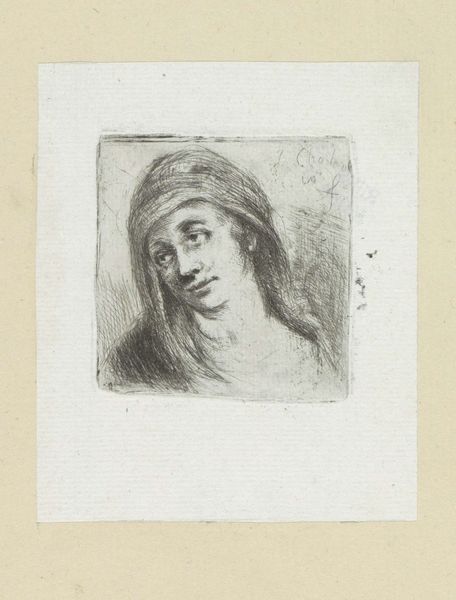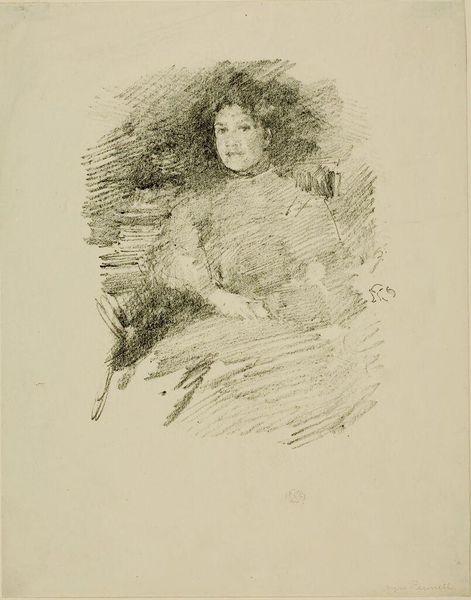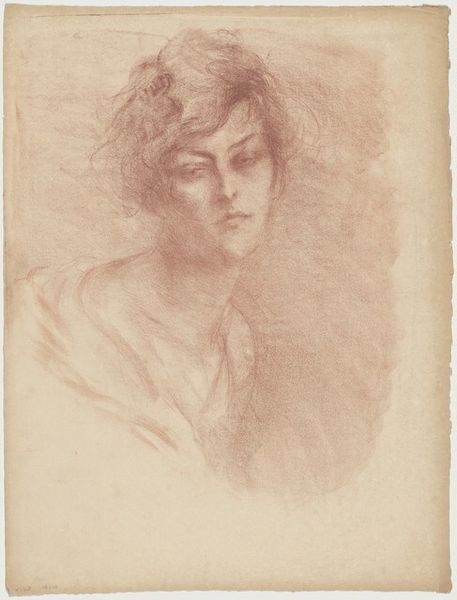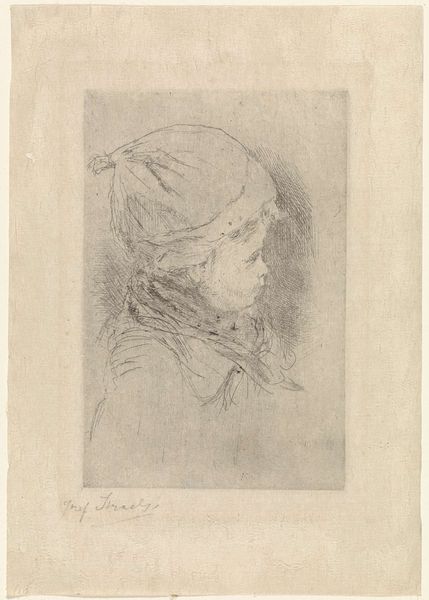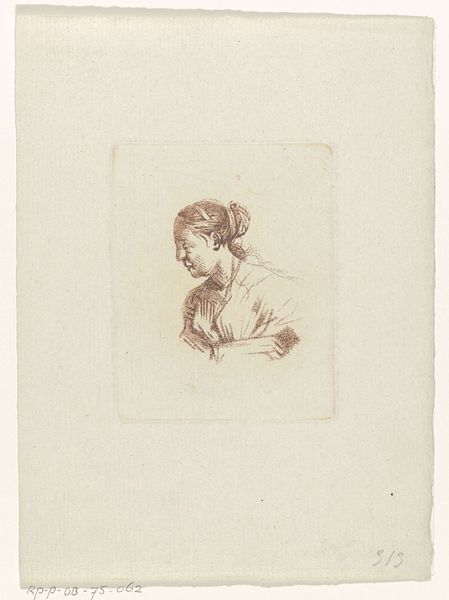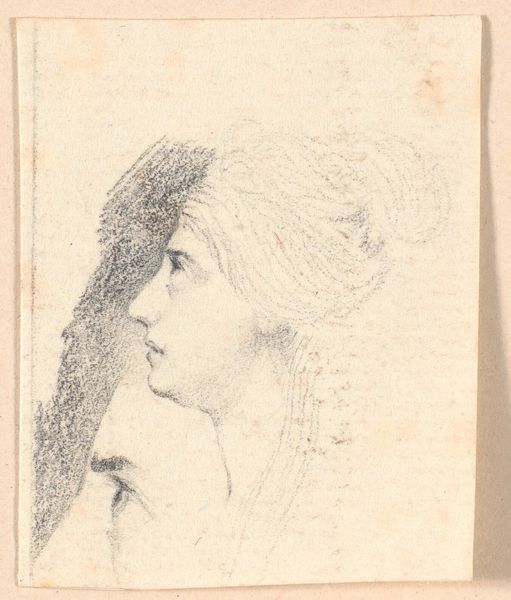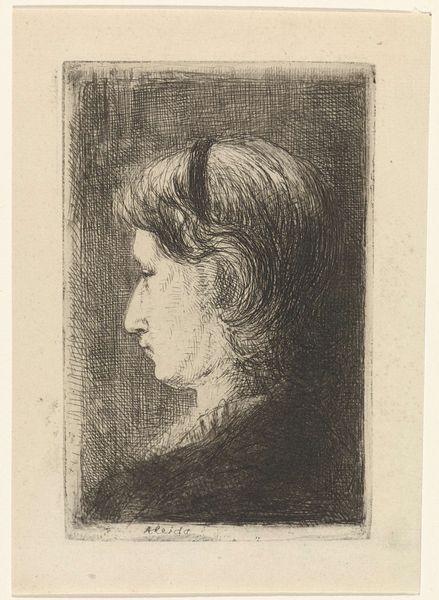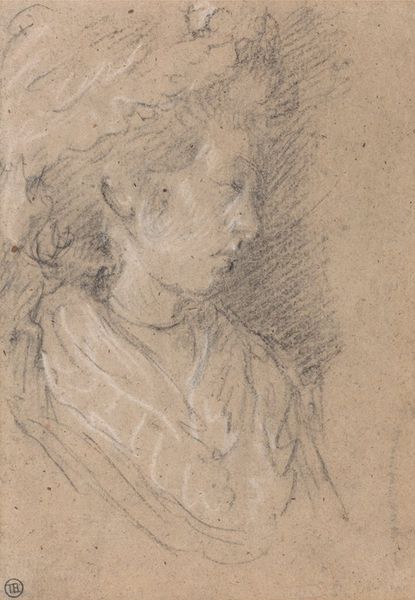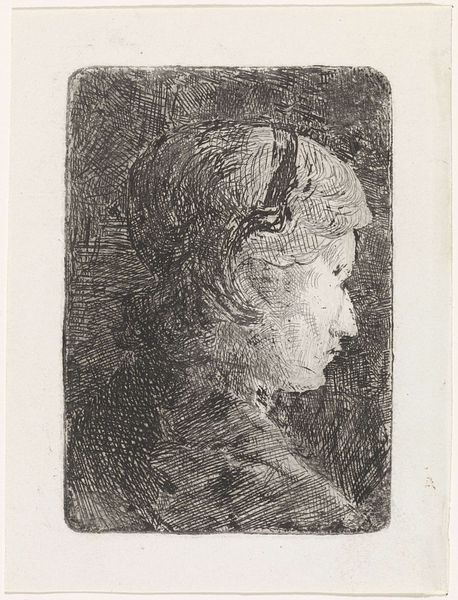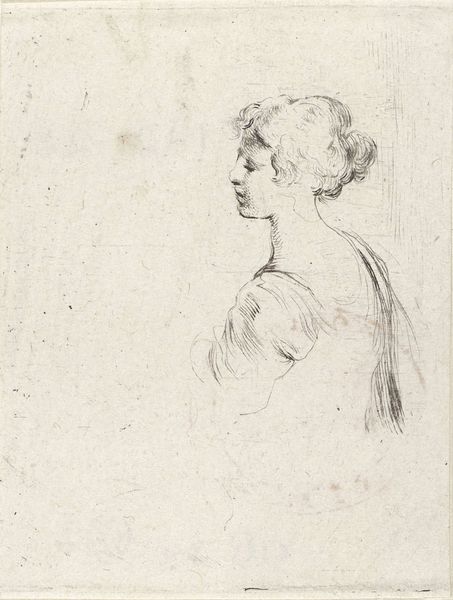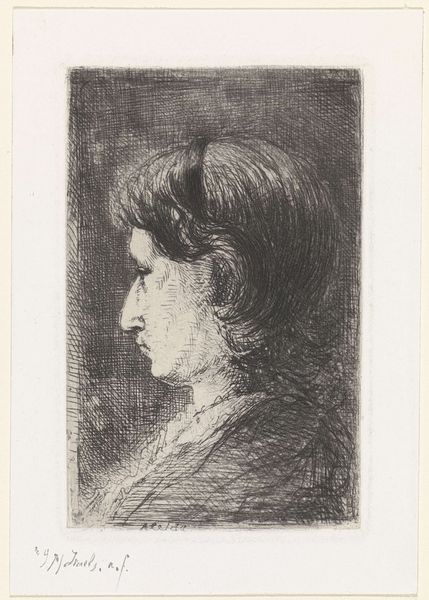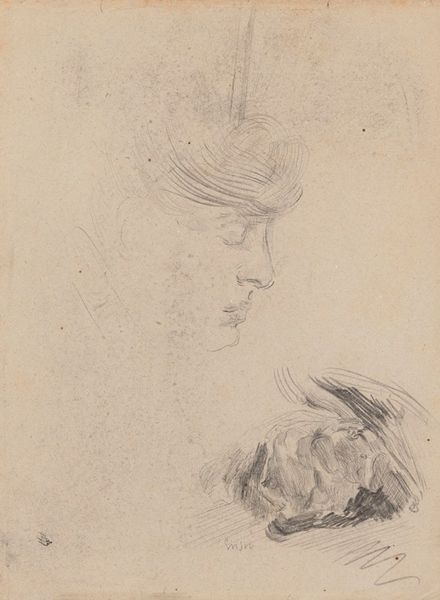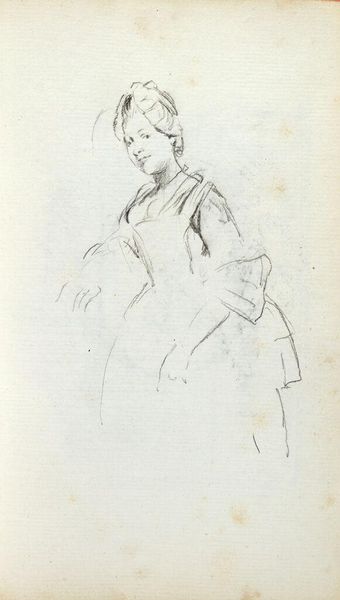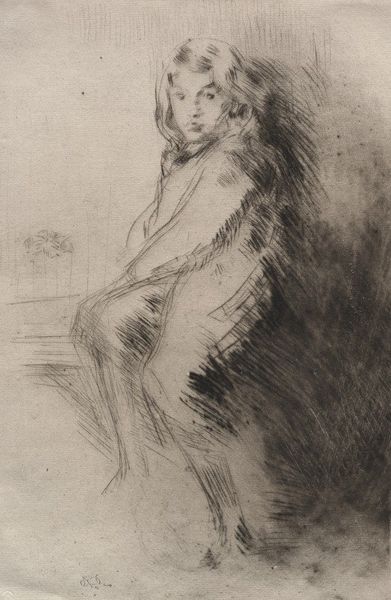
#
pencil drawn
#
amateur sketch
#
light pencil work
#
pencil sketch
#
incomplete sketchy
#
charcoal drawing
#
pencil drawing
#
ink drawing experimentation
#
portrait drawing
#
pencil work
Dimensions: height 132 mm, width 90 mm
Copyright: Rijks Museum: Open Domain
Curator: This delicate rendering captures the head of a woman, facing left in profile. It is titled "Hoofd van een vrouw, en profil naar links," attributed to Pieter Bartholomeusz. Barbiers, and believed to have been created sometime between 1782 and 1837. The artwork resides here at the Rijksmuseum. Editor: There's something so ethereal about this portrait, it feels incredibly fragile. The soft pencil lines give the figure a dreamlike quality, almost as though she's fading into the paper itself. Curator: The piece immediately reads as a study, likely preparatory. The composition relies almost exclusively on line. The subtle gradations of shade establish depth and contour without relying on heavier application, indicative of a developing skill. Editor: Indeed, that technique echoes popular artistic training methods during that period. The focus would have been on replicating classical ideals. I wonder if this piece can give us insight into contemporary societal expectations about women and how they were perceived. Curator: Precisely! Consider how the soft, almost indistinct features contrast with the precise rendering of the drapery around her head. The subject almost recedes to elevate the textile as a marker of status, thus constructing a powerful visual dynamic. Editor: I agree; the contrast definitely draws attention to the subject’s social position. You know, even the choice of pencil as a medium makes the art far more accessible, because this kind of piece could reach an amateur class in a way that other mediums might not. Curator: A astute point, in observing the intersection between technique, composition, and history; we reveal art's true strength. The application of various elements dictates art's accessibility and interpretation. Editor: By juxtaposing Barbiers’ technique with the wider social picture, we can learn much more about art's function and public meaning in culture. This approach is deeply fascinating! Curator: Exploring the visual architecture of a piece and coupling it with historical and cultural investigation reveals how an image and its many layers have power.
Comments
No comments
Be the first to comment and join the conversation on the ultimate creative platform.
